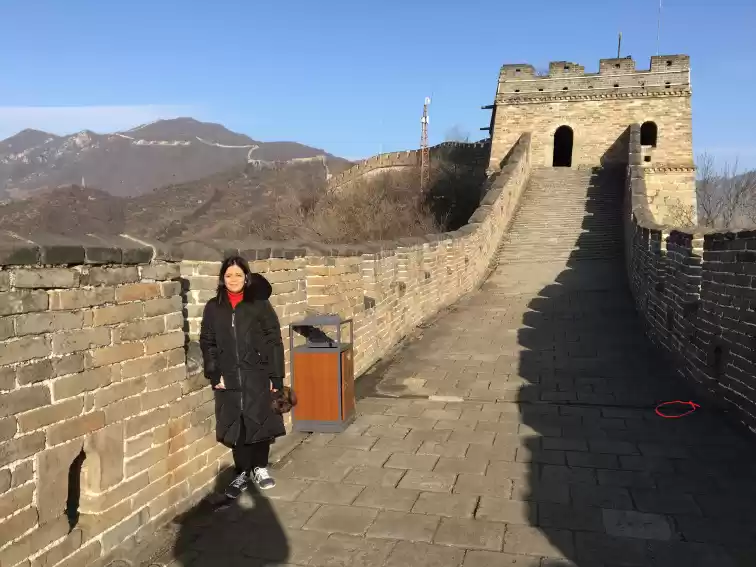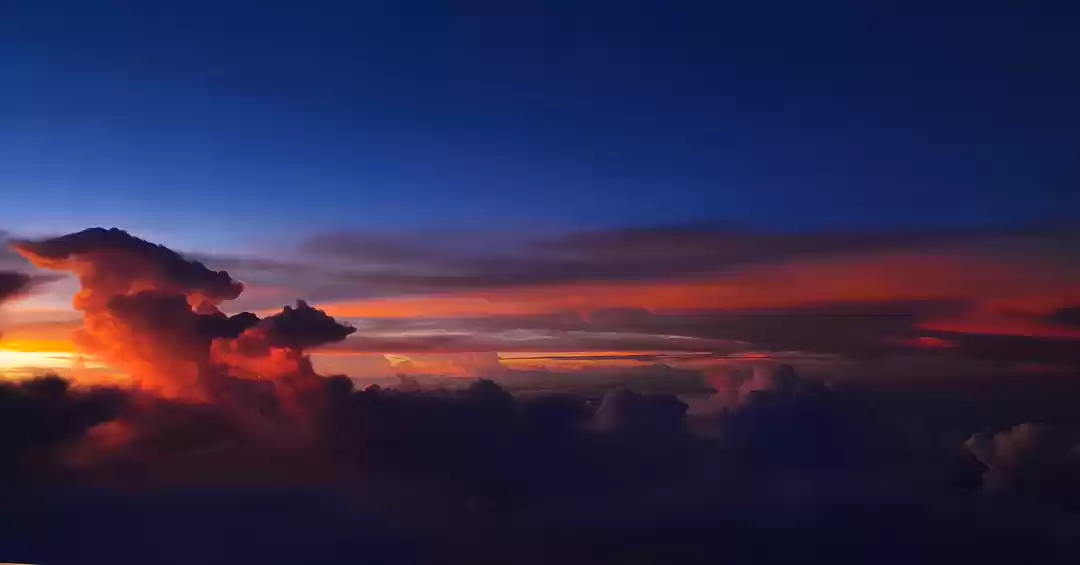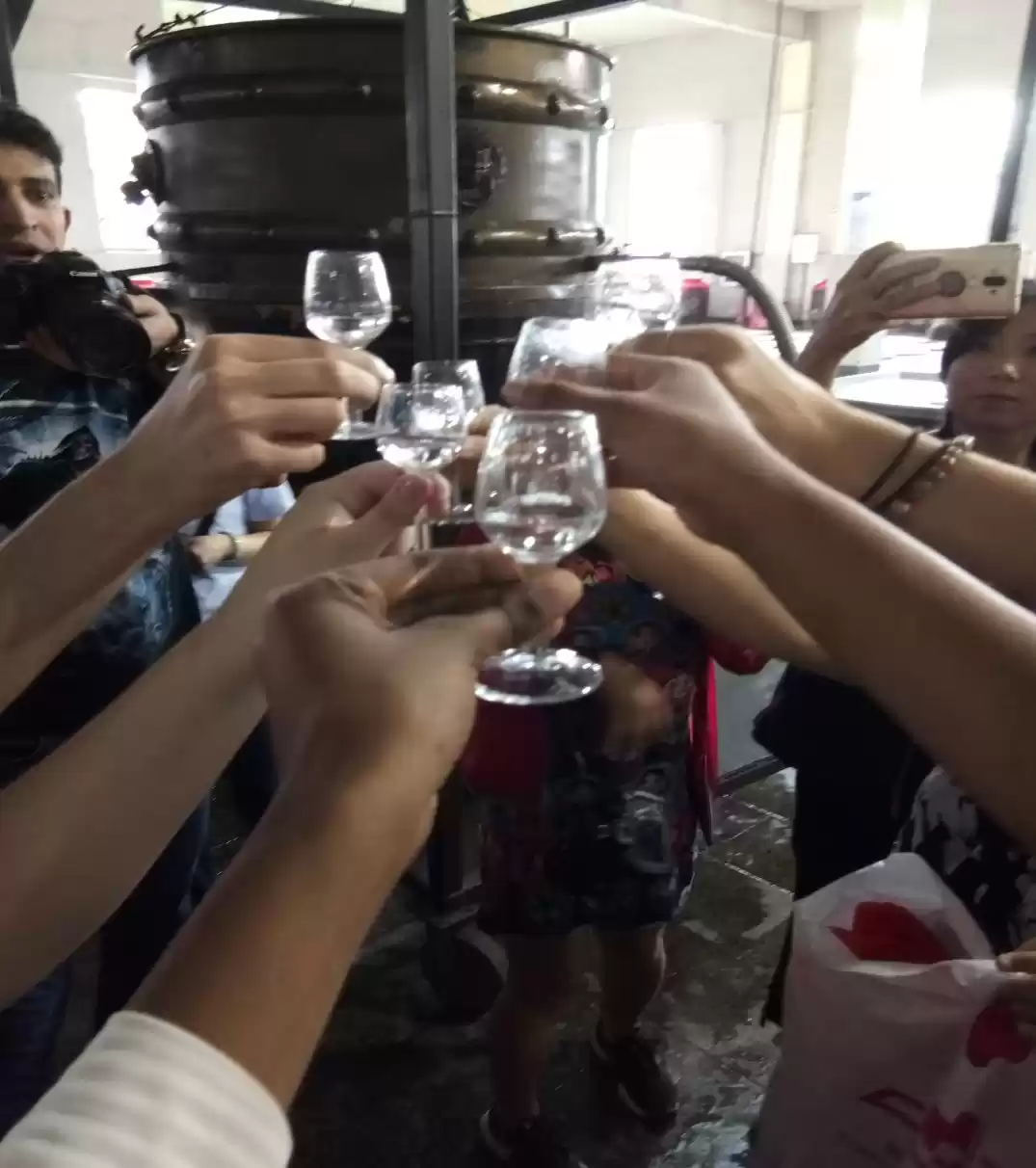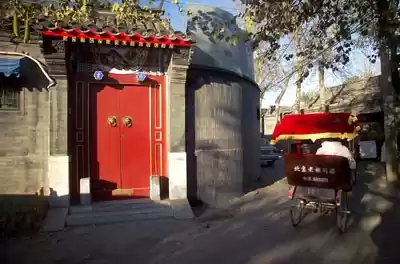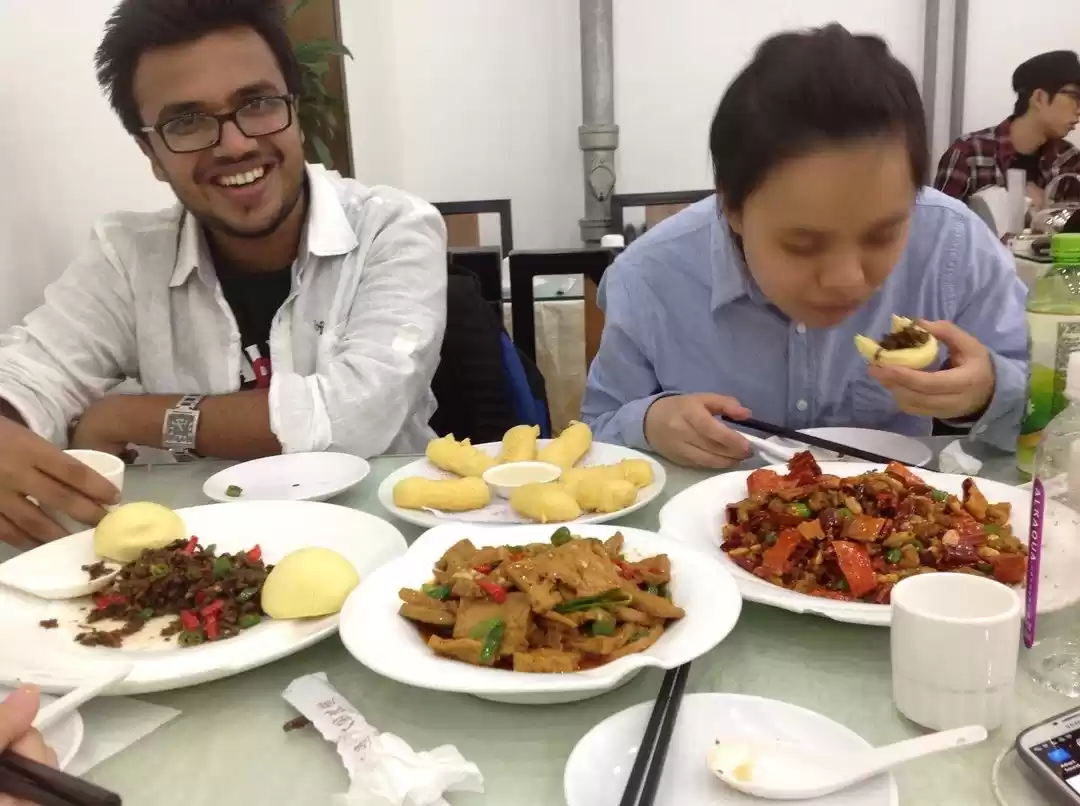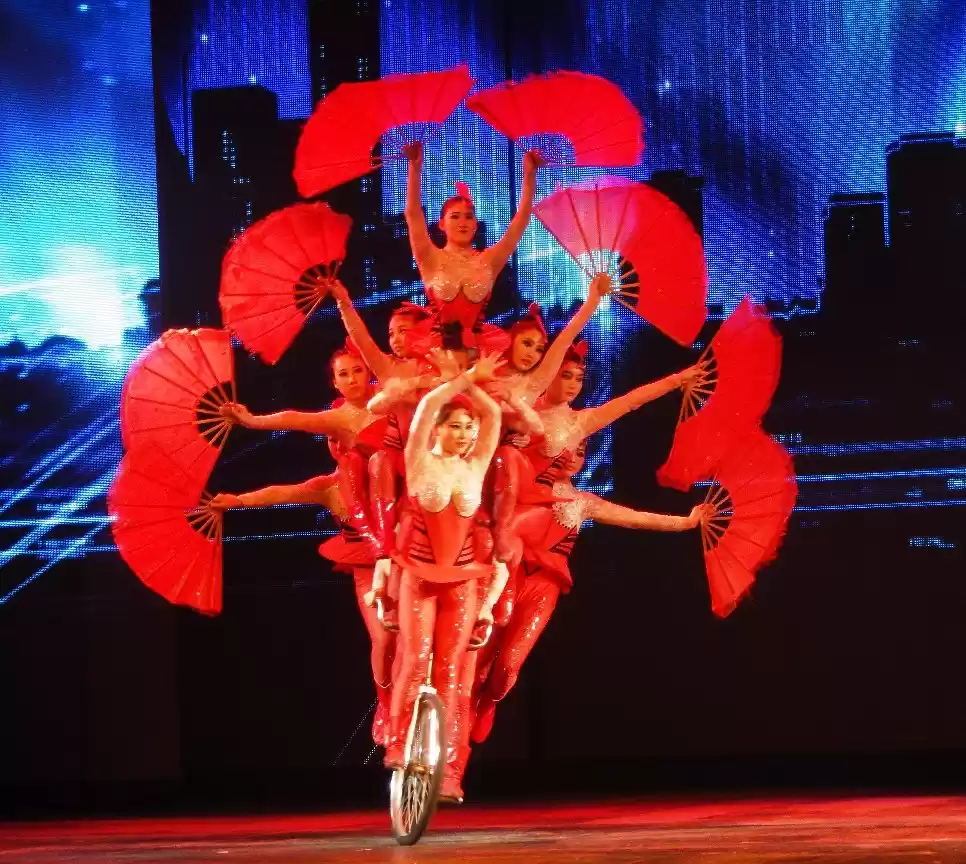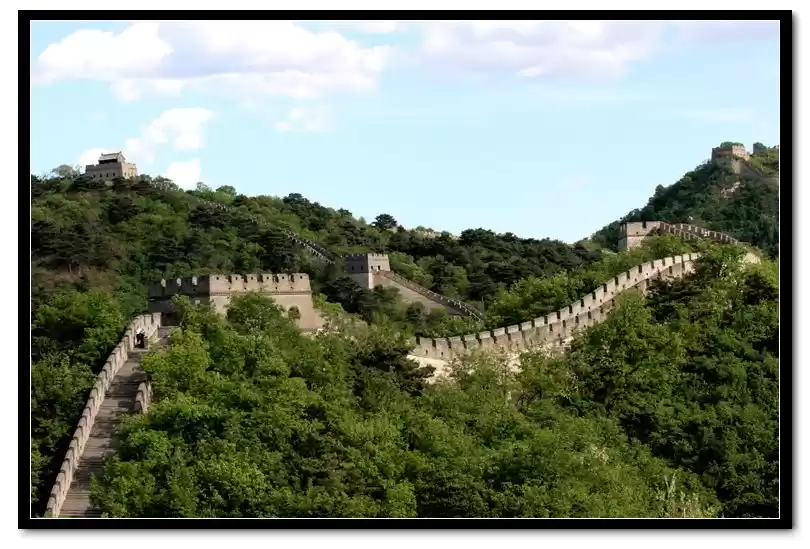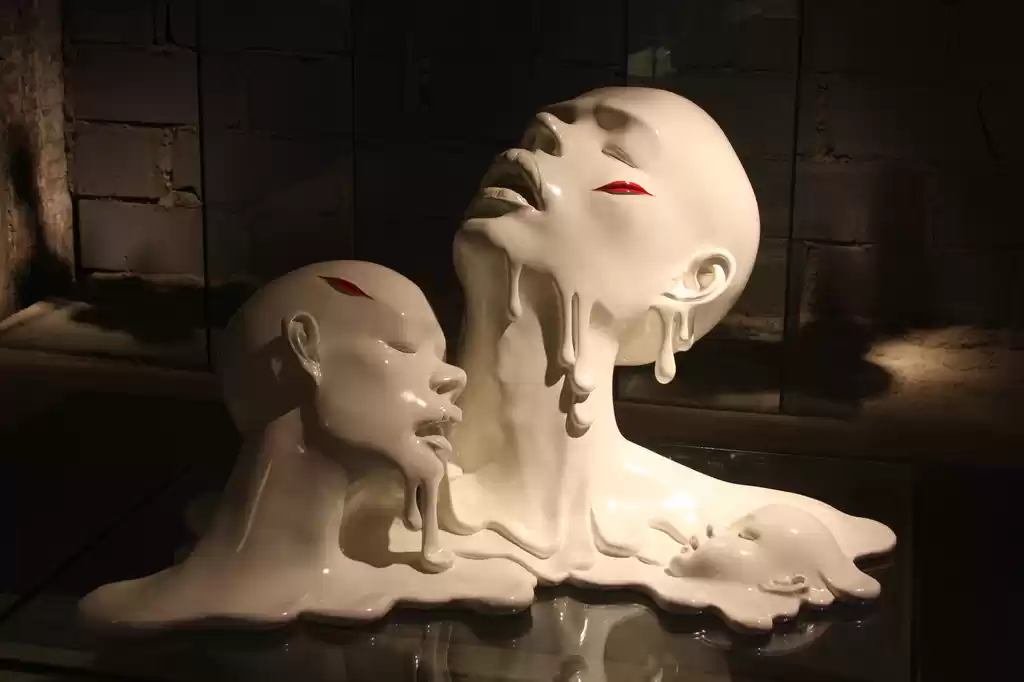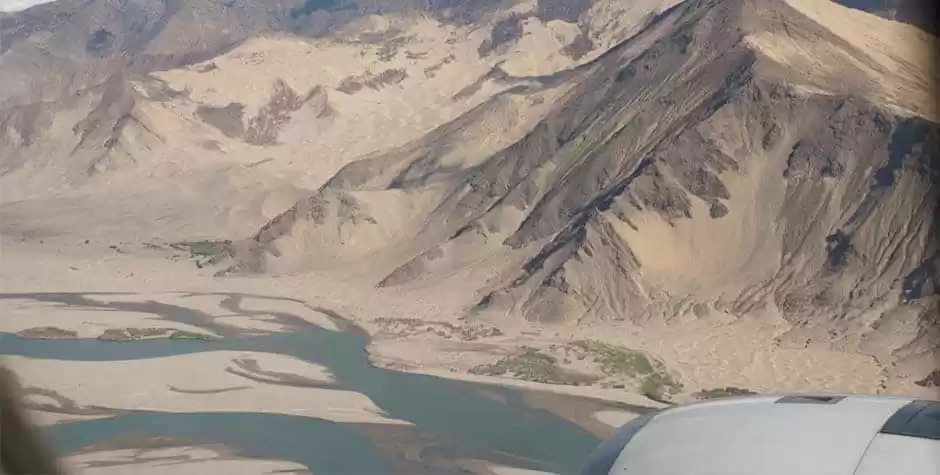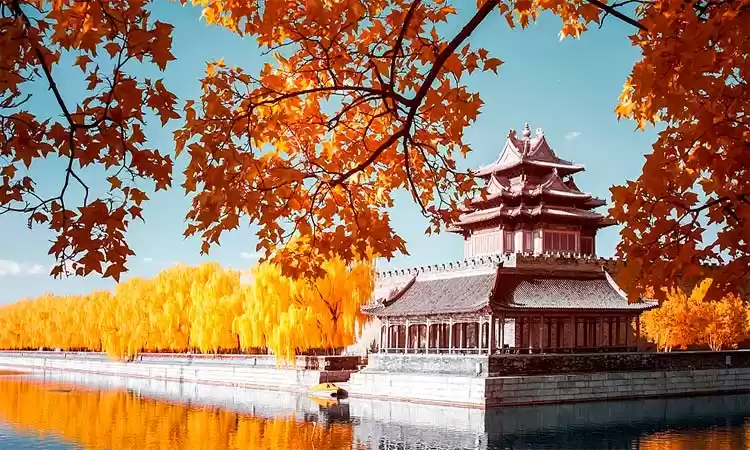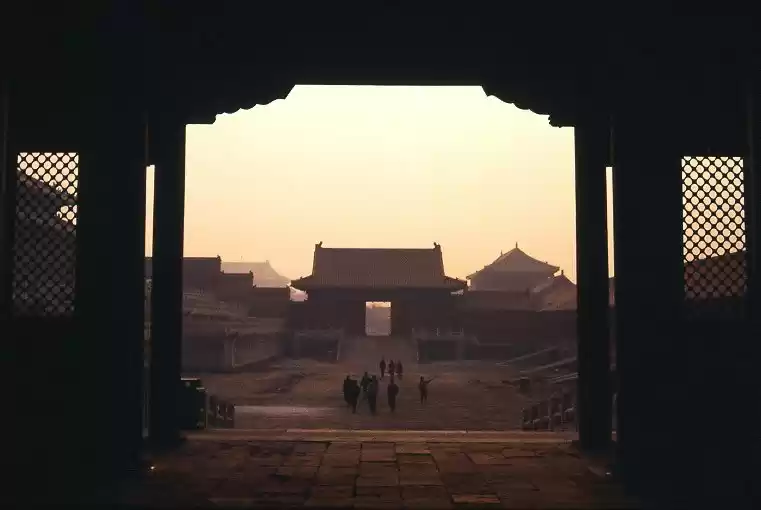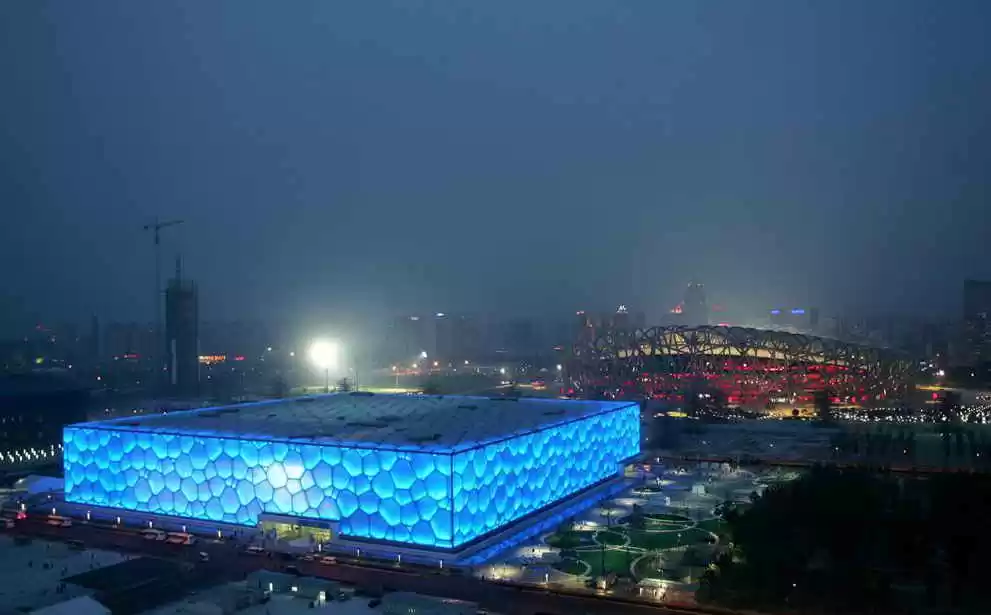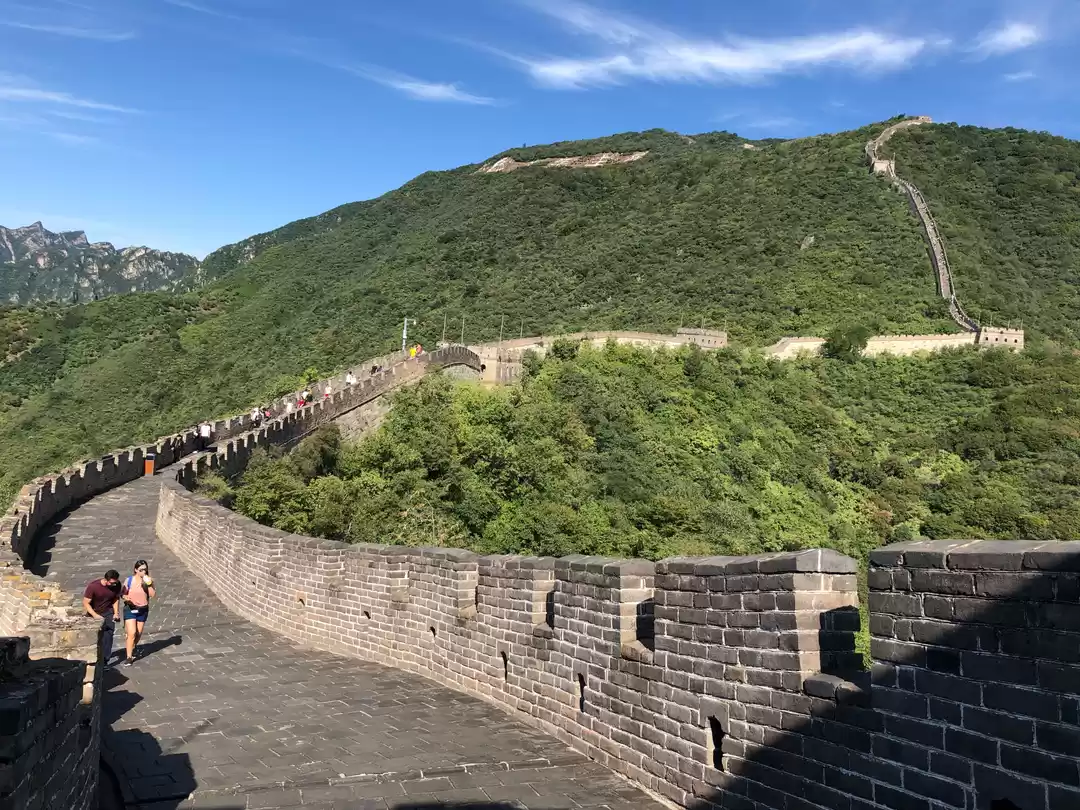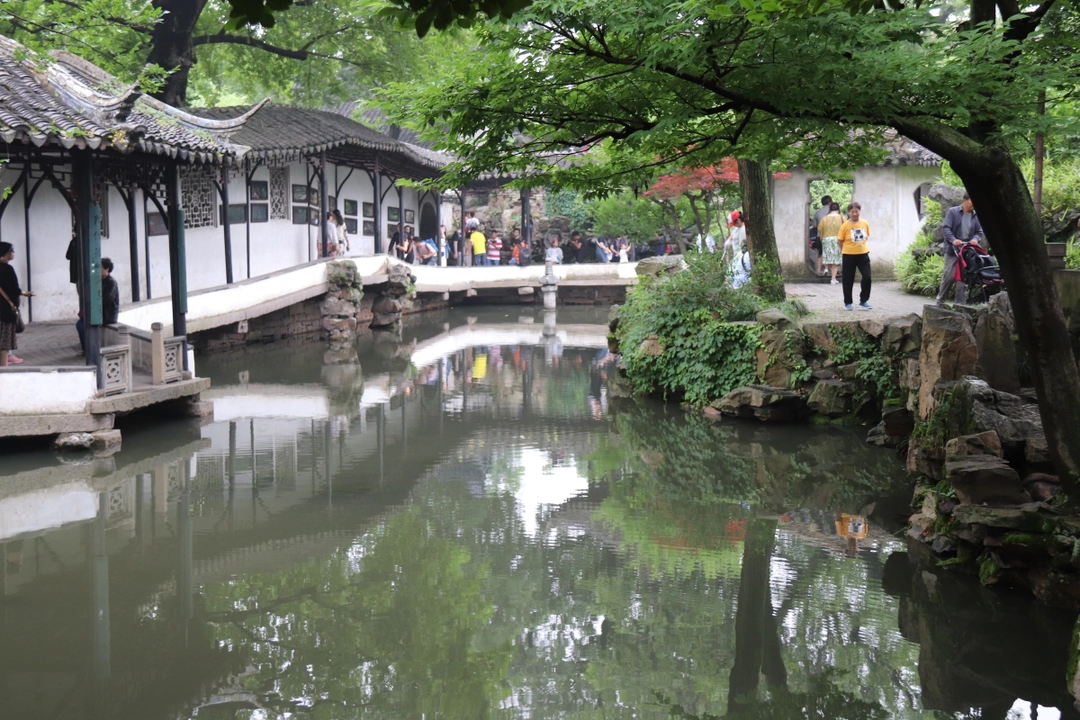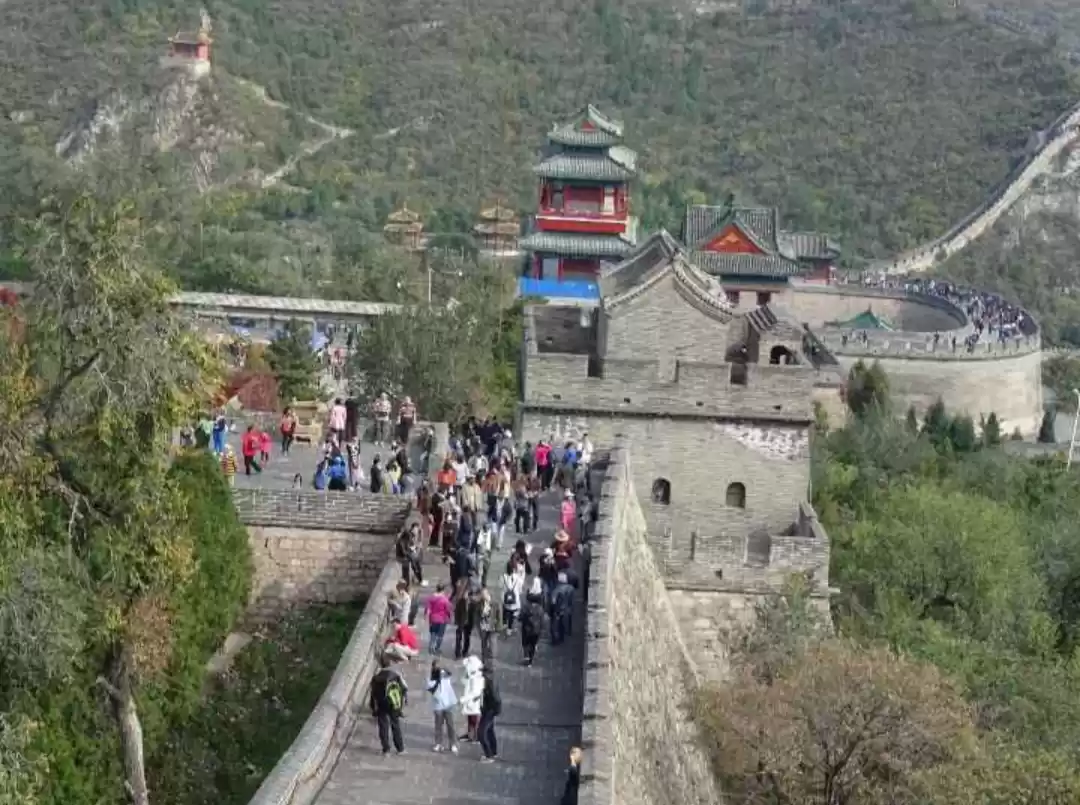

I came to Beijing on 14th December 2015 and started working from the next day. One of the biggest attractions for taking up the job, among the other things, was the proximity to Great Wall. Still, it took almost four months for my first great wall trip. The first one was Badaling in March 2016. Since then, I have been fortunate to see many sites of this marvel, some well preserved/restored, some very natural and rustic.
For an introduction, I am quoting history.com here ( https://www.history.com/topics/great-wall-of-china):
Perhaps the most recognizable symbol of China and its long and vivid history, the Great Wall of China actually consists of numerous walls and fortifications, many running parallel to each other. Originally conceived by Emperor Qin Shi Huang (c. 259-210 B.C.) in the third century B.C. as a means of preventing incursions from barbarian nomads into the Chinese Empire, the wall is one of the most extensive construction projects ever completed. The best-known and best-preserved section of the Great Wall was built in the 14th through 17th centuries A.D., during the Ming dynasty (1368-1644). Though the Great Wall never effectively prevented invaders from entering China, it came to function more as a psychological barrier between Chinese civilization and the world, and remains a powerful symbol of the country's enduring strength. When Emperor Qin Shi Huang ordered construction of the Great Wall around 221 B.C., the labor force that built the wall was made up largely of soldiers and convicts. It is said that as many as 400,000 people died during the wall's construction; many of these workers were buried within the wall itself. Today, the Great Wall is generally recognized as one of the most impressive architectural feats in history. In 1987, UNESCO designated the Great Wall a World Heritage site, and a popular claim that emerged in the 20th century holds that it is the only manmade structure that is visible from space. Over the years, roadways have been cut through the wall in various points, and many sections have deteriorated after centuries of neglect. The best-known section of the Great Wall of China-Badaling, located 43 miles (70 km) northwest of Beijing-was rebuilt in the late 1950s, and attracts thousands of national and foreign tourists every day.
The total length of the Great Wall of China built in different dynasties is 13,170.69 miles (21,196.18 kilometers), announced by China's State Administration of Cultural Relics in 2012.
The description in this blog is in the order of the date my visits to different sites of the Great Wall, thus it is also written at different times. It doesn’t necessarily try to rank order them in terms if their “must visit” nature. Each site is unique, though has common features.
The reader can jump to description based on the Great Wall site in the following order:
1. Badaling
2. Mutianyu
3. Simatai
4. Juyongguan
5. Huanghuacheng
6. Huaibei
7. Yaoziyu
8. Jinshanling
9. Xiangshuihu
10. Laolongtou
1. Badaling
Our friend at Link Park, Ranganath has been in China for long time and Hari was bothering him to plan an outing. Unable to bear our torture, he planned for Badaling visit on Saturday, 12 th March 2016. He booked a car through his contact for the whole day.
Badaling is a popular and the most visited Great wall site about 80kms north of Beijing. This was built during the Ming Dynasty (1505) to occupy a commanding and strategic position for protecting the Juyongguan Pass (Juyongguan section of the Great Wall) on its south and for protecting the city of Beijing. The wall has undergone restoration several times.
We left Link Park around 8am and reached Badaling at 11am. There was already a big crowd. Though I liked to climb, Ranganath was not going to hike. We got in to the queue for the cable car. We were on top by 11.30am. The walk on the wall is about four kilometers, with many towers, passages and steps. The stems were mostly easy. We spent one hour on the wall and caught the downward cable car. On the way back, we visited Ming's tombs.






Ming tombs
Ming Tombs are at the foothill of Tianshou Mountain and house the Mausoleum of thirteen emperors of the Ming Dynasty (1368 - 1644). The area has several tablets and a museum with several exhibits and the statue of Hai Rui (Hai Jui; 23 January 1514 - 13 November 1587), a very famous Chinese official of the Ming Dynasty. In China he is remembered as a model of honesty and integrity in office.
2. Mutianyu
When my wife and son were here, we planned for a day trip to the Great Wall at Mutianyu on Sunday, 15 th May 2016. We hired a taxi for the day. We started around 6.15am and reached at 9.15am.
Located among the mountains to the north of Beijing, the Great Wall of China was constructed and reconstructed at Mutianyu to keep out the nomadic tribes to the north. A short 60 km trip outside of Beijing, The Great Wall of China at Mutianyu stands as a monument to both the strength and the weakness of the Chinese Ming Dynasty (1368-1627). The Mutianyu Great Wall is one of the best-preserved and best-known Great Wall sections. It is also a huge commercial hub with many shops selling food and memorabilia. There are shops on the wall in some parts.








We took the cable car for going up and reached the top around 10:30 am. The walk on the wall was nice. We walked for about one and a half hour going through different towers and arrived at the point from where we took the Luge to come down. Once we were down, we went around the park. The landscaping was great and there were also some artificially created caves, bridges and water falls. There were people dressed like soldiers with whom we posed. Hema also enjoyed getting photographed with local children. We bought few embroidered wall hangings that were beautiful and were reasonably priced.
By 2pm, we came out and caught our taxi back home. On the way, I requested Chao to take us via Bird's nest, the Olympic stadium. It took a long time due to the traffic, and Chao was exploring the country side to avoid the traffic. We could stop for some time to take pictures of the Bird's nest. We were home by 6pm.
3. Great Wall at Simatai and Gubei water town
Our next Great Wall visit was to the Simatai. This was my colleague Zhilong's recommendation. We wanted to go during the weekend of July 9-10, and explored the possibility of staying in the water town. We booked hotel rooms through booking.com and hired Chao's car for two days at 1800RMB. It was four of us this time with Vamsi and Bhaskar joining us.
We started in the morning and reached the hotel by 1pm. The hotel's name was Beijing Simatai Fuxingdezhao Farm stay. The place all around had similar hotels. We had lunch in the hotel.
Next morning, we bought tickets for the Great wall and a bus dropped us to the starting point of the great wall. It was steep climb in some places. Portion between towers one and 10 are rebuilt and most people walk there. There are some portions outside this are in bad shape and are not allowed to pass. Around 11.30am, we wanted to come down and our people were dehydrated. As we couldn't see water being sold on the wall, we decided to come down by the cable car. We came down and waited for the bus to drop us to the water town. There we had lunch in a restaurant, contacted Chao and returned to Beijing.
Gubei Water town is regarded as "Wuzen in Beijing". It is a great combination of the hills, river and old style buildings. In the evening there was festive atmosphere in the streets of the town. We walked through the streets and visited a Church on the hilltop and a Pagoda. In the central ground, there was a display of acrobatics and show of strength. We had dinner of corns, groundnuts, and barbecue vegetables in an open air restaurant. It was already dark and we proceeded to see the musical fountain. It was an amazing show that had water, lights and fire all in one.
Gubei Water town is regarded as "Wuzen in Beijing". It is a great combination of the hills, river and old style buildings. In the evening there was festive atmosphere in the streets of the town. We walked through the streets and visited a Church on the hilltop and a Pagoda. In the central ground, there was a display of acrobatics and show of strength. We had dinner of corns, groundnuts, and barbecue vegetables in an open air restaurant. It was already dark and we proceeded to see the musical fountain. It was an amazing show that had water, lights and fire all in one.
Next morning, we bought tickets for the Great wall and a bus dropped us to the starting point of the great wall. It was steep climb in some places. Portion between towers one and 10 are rebuilt and most people walk there. There are some portions outside this are in bad shape and are not allowed to pass. Around 11.30am, we wanted to come down and our people were dehydrated. As we couldn't see water being sold on the wall, we decided to come down by the cable car. We came down and waited for the bus to drop us to the water town. There we had lunch in a restaurant, contacted Chao and returned to Beijing.














4. Juyongguan
I got an opportunity to visit Juyongguan as a part of an office meeting. About 150 of the middle and top management of the company were taken to a hotel near the great wall for the weekend of 27-28 August 2016. On Saturday afternoon, after the meeting was over, we were taken to Juyongguan by buses.
Juyongguan (Juyong pass) Great Wall is one of the three most famous passes along the Great Wall of China, together with Jiayuguan and Shanhaiguan. 37 miles (60 km) from downtown Beijing, Juyong Pass was the northern direct access to Beijing in ancient times. The pass had many different names during former Chinese dynasties. However, the name 'Juyongguan' was used by more than three dynasties. It was first used in the Qin Dynasty when Emperor Qinshihuang ordered the building of the Great Wall. Juyongguan pass was connected to the Great Wall in the Southern and Northern Dynasties era.
The present pass route was built in the Ming Dynasty and was renovated later. It was a very important strategic place connecting the inner land and the area near the northern border of China. It was also used to defend the ancient city of Beijing.
A legend about the Jiayuguan Pass tells of a workman named Yi Kaizhan in the Ming Dynasty (1368BC-1644BC) who was proficient in arithmetic. He calculated that it would need 99,999 bricks to build the Jiayuguan Pass. The supervisor did not believe him and said if they miscalculated by even one brick, then all the workmen would be punished to do hard work for three years. After the completion of the project, one brick was left behind the Xiwong city gate. The supervisor was happy at the sight of the brick and ready to punish them. However Yi Kaizhan said with deliberation that the brick was put there by a supernatural being to fix the wall. A tiny move would cause the collapse of the wall. Therefore the brick was kept there and never moved. It can still be found there today on the tower of the Jiayuguan Pass.
The major trek path is circular and has 14 towers. It is very steep in some places. For some time, we were not sure if we have to complete the route or not, as there were many who were tired looking at the scale of the trek. Few of us decided to complete the trek and four of us were the first ones to finish. The view from the wall and towers was amazing with beautiful cloud cover in the sky. It took about 1 and a half hours to complete the trek and we were down by 4.30pm.





5. Huanghuacheng, the waterside great wall
This was a trip I took with FCN (Foreigner's China, or Laowai) on 15 th April 2017. Huanghuacheng is the only lakeside Great Wall in Beijing. It is one of the top destinations for a Great Wall hiking tour. Visitors can also take a boat to appreciate the Great Wall at Huanghuacheng from a different angle. Some parts of the wall are supposed to be submerged in the lake. It is about 70 kilometers away from Beijing city. When summer arrives in full bloom, the village below gets filled with yellow wild flowers ('yellow flower' is 'huanghua' in Chinese). Hence the village name is Huanghuacheng. The construction commenced in 1404, two years before the Ming Dynasty (1368 - 1644) moved its capital to Beijing, and continued for 188 years. Encircling the clear Haoming Lake, this section is 7.7 miles (12.4 kilometers) in length and partly submerged. A reservoir dam was built on the former site of Xishuiyuguan Pass, near the entrance to the scenic area. There is a chestnut garden at the mountain foot. It was planted by soldiers of the Ming Dynasty, who were assigned to stand guard in Huanghuacheng. The Temple of Meng Jiangnü is 5 km northeast of the Shanhai Pass Great Wall Fortress.
We were picked up at Huixinxijienankou subway station at 8.30 and taken to Huanghuacheng by a minibus. We were about 25 people from different countries and my colleague Aijun was with me. We met Kabeer, who was from India. There were some games like passing the parcel played on the bus. Some of them got to speak and sing. We reached around 11.40am and were given time till 4pm. It took us some time to get to the right path. Kabeer, Aijun and I were together and we did most parts of the great wall, skipping the boat ride.









The hike was very scenic, the lake adding to the beauty. There were colorful flowers on the trees by the side of the wall. Between the two sections, we took a lunch break around 1.30pm. We were back to the bus by about 4.10pm.
Huanghuacheng was my fifth great wall site and is certainly the most memorable one.
6. Great wall and rafting at Huaibei ski resort
On the weekend of June 18 th, I went for a day trip with FCN. The information said cool rafting after a brief visit to the great wall. Two of my colleagues Dave and Ashly were keen and I joined them. We were not clear, but we booked.

As usual, we caught the bus at Huixinxijienankou subway station. The journey was about one and a half hour and we were at the place by 9.15am. Red, the leader had told that we will climb the Great wall before lunch and would do the rafting in the afternoon. We were all given the rafting cards. We had a customary group photo and dispersed. Autumn was the designated FCN photographer.
Huaibai is a large ski resort that is undergoing major expansion and changes. A dinosaur park is also being developed there. We could see the cable car lines meant to take people up for t skiing. The Great Wall portions are inaccessible in many places and work is being done. I realized that the path we took for the great wall hike said "not for public". The path, unlike the other well-known portions of the Great Wall, didn't have the side walls. The access to most towers was not there and we had to go through risky sideways. But the whole place was very scenic and the wall and the towers looked great. We went to one portion and returned to the original point, and I took the opposite path to go to a higher tower. This path had wooden steps and side rails for holding. I could see the town on the other side from top. The entry to the tower was barred using steel barricades. Next to each tower, there is an artificial tree that I first mistook to be real!
We walked for about 2 and a half hours and came down around noon. We decided to go for lunch. Autumn and Mao ordered lunch for four of us. As I liked, they ordered Kung Pao Chicken, which was really yummy. Unfortunately, as we had just tasted it, Mao discovered a fly in the dish and we had to return it.
After the lunch, we proceeded to the rafting place. We hired the locker to keep our belongings as we were going to get wet. From a distance, I saw the rafting happening in narrow canal and was circumspect. I had done rafting before in forceful Kali River in India.
We had to wait in a queue to be taken to the start of the rafting spot by bus. Each raft carries two people. Dave and Ashley took one and I was in another raft. The caretakers pushed us into the canals and wow, the raft took off! It was really an amazing ride with the raft rushing through the water and water splashing on to the face. On the way, there were many lake-like places where one could relax. People also played with water splashing it on to others.
The rafting was really thrilling and lasted about 90 minutes. There were cameras installed on the way to take pictures. Unfortunately we couldn't get ours. We took shower and changed. The change area was spacious and clean. It was close to 4pm and it seemed like it was going to rain. We boarded the bus and left for Beijing. The return journey took longer and we were at Huixinxijienankou around 6.30. We caught the subway and reached home around 7.20pm.
The rafting at Huaibei was an awesome experience and so was the Great wall trek. Once all the work is completed, the ski resort will be a great getaway and will attract large crowds.




7. Wild Great Wall at Yaoziyu
While the portions of great wall closer to Beijing, like Badaling and Mutianyu are well preserved and restored, there are parts of Great Wall that are 'wild' meaning they have not been restored to look better. They provide a more natural rustic view, but are not easy to access. One such stretch is the Yaoziyu Great Wall. This was a trip with CET (Culture Exchange Trip) group on Saturday, 14 th April 2018. The pictures shared in the CET link were very impressive and the title read "Hiking to Geziyu Wild Great Wall + Enjoy Spring Blossom". Though they called it 'Geziyu' or Mule's mouth, Vicky, a co hiker, told me later that it was Yaoziyu section. This is to the northeast of Beijing in Huairou district. Named after the 800-year old village there, the Yaoziyu Great Wall of China is an extremely beautiful but a bit risky part of the Great Wall that is rarely seen by visitors.
Booking was simple, the reporting time at Huixinxijienankou subway station was 7:40, which means slightly later than normal. I prepared a chapati egg roll in the morning and carried for lunch. The group size was about 40 people, and as usual, the participants were from different parts of the world. There were two CET leaders, Melody and Kevin. People introduced themselves and some sand songs. I also sang a bit. We reached the base at 9:30 and took a group picture at a big rock with a writing (a standard of most tourist places in China). I also saw a signboard that said, "This section of the Great Wall was not open to public".
Once we started the moving, within few minutes was a steep hike in a winding bushy path. The trail had become slippery due to previous day's rain. We had to hold on to stronger plants and roots to climb. Volunteers from the team, at tricky spots gave helping hand to struggling climbers. After about one and a half hours of difficult uphill climb, was the first glimpse of the Great wall and the first tower. Some of us climbed the tower and took pictures, while most rested outside on the wall and ate the lunch they had brought.













Next walk was the on the Great Wall itself. As said before, it is not a well-preserved part, and becomes very treacherous trail at times, with loose stones. Many climbed the first tower and took pictures. We took a lunch break here. I finished my roll and took some pictures. The scenery all around was fantastic. Melody said that two weeks before, the hills were full of flowers, mostly a kind of cherry blossoms. But now most had withered in the strong wind. After about 45 minutes, we started to walk on the wall again and crossed four or five more towers. Some towers in were in good shape, while some dilapidated. Some people were crossing the path crawling, due to the fear of slipping.
By about 15:00 we came down, walked through a natural trail and at 15:20, reached the entrance where we had stopped for a photo during the start. We had to wait for some time for everyone to come back and the vehicle started back for Beijing. We reached Huxinxijienankou subway station by 18:00 and I was home by 19:20.
This Great Wall hike was clearly different and had a flavor of wild hike. Thanks to CET for the opportunity.
8. Jinshanling Great Wall
It was still cold during the last week in February, but I couldn’t sit at home. I saw this update in FCN about the visit to Jinshanling Great Wall on 23rd February 2019, and my love of the Great Wall got rekindled. I checked with Hari and booked the trip for three of us. As I was not sure of the terrain and how Hema will face it, I had decided to make use of the cable car. We took the subway to Huixinxijienankou at 6:30 am and reached in time. The group had about 20 people, with two leaders Celine and Ruo, both of whom I had known earlier. To their surprise, I wasn’t carrying my SLR camera to the trip. It took us 2.5 hours by bus to reach the scenic area.
Jinshanling (金山岭), is a section of the Great Wall of China located in the mountains of Luanping County, Hebei Province, 125 km northeast of Beijing. The name is due to the hills on which it rests. This section of the wall connects with the Simatai section to the east and Mutianyu to the west. Jinshanling section of the wall was constructed under the direction of general Xu Da in 1368 during the Ming Dynasty (1368-1644) and renovated under the supervision of the great general Qi Jiguang and the local governor Tan Lun in 1567. The Jinshanling section of the Great Wall is 10.5 km long with 5 passes, 67 towers and 3 beacon towers. The initial section of the wall has been restored to original condition. The entrance fee is 55 RMB. A cable car (40 RMB one way, 60 RMB round trip) has been constructed to take visitors to the highest point along the wall.
In the bus, the leaders handed over a leaflet with the map of the Great Wall and gave instructions. Entrance of the scenic area was impressive with resting places. They also had brochures with details about the place in English. The approach to ticket office was about half an hour’s walk through nicely designed wooden path. At the ticket office, Celine bought the tickets and handed over to us. As decided earlier, I and Hema took the cable car. The journey was scenic and took about 20 minutes to the top. We walked towards the Great Wall from the cable car station. There is a view point from where people take pictures. We took a right at the Great Wall as more attractions seemed to be there as per the map.


The first one where we join the wall was Xiaojinshan tower. The name is because of the peak on which this tower rests. It is of brick arch structure with two floors connected by a brick stairway. The brick door frames are made to look like wood. This tower was renovated to its original shape in 1985. At the tower, there is a small shop selling water, juices, walking sticks and memorabilia. The view from the tower is very scenic.



From there we passed couple of open towers to reach the third open tower, The Heigu Tower. This building was originally constructed in 1569 with bricks and wood, later replaced by bricks and stones. The Heigu Tower has two floors. In 1986, the bedroom at the top was renovated. The information placed in the tower says according to a legend, the building was struck by lightning and caught fire. A builder’s daughter Heigu, died while fighting the fire. In honor of her bravery and sacrifice, the tower was named as Heigu Tower after reconstruction.

In about 100 meters further was Shalingkou pass, built in 1383 with General XuDa of Ming dynasty leading the efforts. We met Hari and Ruo here. They were coming from the opposite side. The hike has been easy.



We continued further and reached the General Tower. This is known as the "Most Representative Enemy Tower". It is 10 meters long, and 11 meters wide. There is a stone staircase leading to the top of the tower. On the upstairs is a sleeping place, while a storehouse can be found on the lower story. There are complex constructions outside the tower. To its north are beacon towers, branch walls, support walls, and horse blocking walls. To its east and west are barrier walls. Beacon towers were used to detect and transfer military information.

We ate our packed lunch of Chapatis and continued further. After visiting the brick line and few more towers, we stopped at a dilapidated tower, and decided to come back. We came back to the entry point of Xiaojingshan tower, we continued further towards the flower tower. The approach towards the next tower that is supposed to have the Kylin screen wall, was tricky. Here we decided to return. We proceeded to the cable car station and quickly came down by 13:30. We went around for some time before getting into the bus and were back in Beijing by evening.
Though Jinshanling was my eighth different Great Wall site trip, this was also unique. I feel it is a blend of wild as well as renovated Great wall. The place is being developed very well for tourism. As I had mentioned in my several write up, China knows how to preserve, restore and showcase its heritage sites and use tourism as a powerful tool for economic growth. More details about Jinshanling can be found in their exclusive website: https://www.jinshanlinggreatwall.com/
9. Xiangshuihu Great Wall
After about a month of visiting Jinshanling part of the Great Wall, there was a new trip to Xiangshuihu, with CET. The CET advertisement said, “Great Wall and plum blossom, Feel the spring of the Great Wall”. Hari and Vamsi (my colleagues) also showed interest and I booked for four people. The price was reasonable, with group discount it came down to 128 RMB from 148 RMB.
As usual, we caught a small bus at Huixinxijienankou at 7:20, and the bus left in about 10 minutes. The group size was small, 15 including the leader, Brady. After a couple of hours journey towards north east of Beijing, we reached the Great wall scenic area entrance at 9:30 and Brady bought the tickets.

There was a special indoor exhibition of the spring blossom (plum blossom, or Meihua). Different kinds of flowers (peach, plum and cherry varieties), and bonsai plants were beautifully displayed. After this, we took a group picture and proceeded to hike the Great Wall. The hike was quite steep, but the weather was cool. The view all around was breathtaking, with the mountains covered by spring blossoms.


The Xiangshuihu (响水湖, Sounding water lake) part of the Great Wall is in Huairou district of Beijing. It was constructed in 1404 during the Ming Dynasty. The name comes from the flowing Xiangshui Spring, the source of drinking water for locals. Nowadays, the Xiangshuihu Great Wall has been partly renovated and developed into a scenic area. With the spring water in the middle, it is considered to be like a swimming Dragon.




There are two parts of the great wall, and a reservoir between them, known as the Moshikou Pass. On either side, the hike to the top of the Great Wall is very steep. We crossed the barrage and climbed the steep steps to reach the top in about an hour. In between there were watch towers. The route was not clear further, and we decided to come down. At 11:30, we had lunch at a local restaurant hosted by CET. The food was delicious and there were many vegetarian dishes.

After lunch, we decided to go to the other side, to the health preserving valley. This was a circular route. Hema and couple of others decided to stay back expecting similar steep route. But, the trail was quite comfortable. The health preserving valley is about 2.5 kilometers, has many medicinal plants on either side of the trail, accompanied by information about the herbs and quotes by famous doctors written on the stones. The trail also was very scenic with water falls and bridges on the way. After about 30 minutes we reached the Dragon King Temple. It is small temple with the Dragon King statue and a couple of paintings depicting his life. In its front is a fresh water spring emerging from a dragon’s mouth. The water is very refreshing. The path further leads to some very wild part of the Great Wall, for some of which there are bypass routes. On the way down is the Luanling part of the Great wall where there were Lianyuan Cave and Tuteng Pavilion. One cave had a large golden dragon, and another had 9 smaller dragons. There were many people climbing the wall from this side. The climbers were both very old and very young.
















It was 14:00 by the time we down. As some people were still behind, we waited for them to join and the bus left for Beijing around 15:30.
Xiangshuihu was my 9th different Great Wall site visit. As I had said earlier, each one is unique. This one was special due to the spring, the flowers and the mystique of the temples in the hills.
10. Laolongtou sea side Great Wall
This was our latest Great Wall trip during the weekend of 22nd June 2019. Hema was keen on a beach visit. When I saw the information about the Trip to Laolongtou on FCN notification, I decided to go ahead with this. Booking was easy as always with FCN. The price was reasonable, 280RMB for the travel, one night’s stay and breakfasts excluding the entry tickets. The two-day trip had one day for the Great Wall and the second day for the sand sculptures at International ocean park.
Laolongtou (老龙头) means Old Dragon’s Head. This is because the Great Wall here resembles a dragon drinking water from the sea. This is about 305 km away from Beijing. The Laolongtou Great Wall was built in 1381 under the supervision of Qi Jiguang, a general of the Ming Dynasty, to protect against northern invaders. During the Qing Dynasty (1644 – 1911) it turned into a great tourist destination, attracting travelers, including emperors to enjoy the scenery and constructions.


As always, we caught the bus at Huixinxijienankou subway station. We were there by 7:05 and the bus left in about 10 minutes. It was a four-hour journey. The group had about 40 people, with Grace, one of our favorites, as the FCN leader. There were two other assistant leaders, Sara and Congcong. We took couple of breaks during the journey and reached the scenic area entrance at 13:30. Grace bought the tickets. We took a group picture and dispersed into the scenic area. The place had shops that sold food and memorabilia. We spent some time in a place where a lady artist created paper cutting as well as painted articles. We also tried to pose for a photo on a horseback, with the horse raising its front legs (30RMB per person). From there we proceeded to the Military maze, a formation that leads to dead ends before you find the right way to the central platform. Next was the visit to the Great Wall. We went through the Chenghai tower, Nanhaikou pass tower and Jinglu Beacon tower to the entering sea stone wall. There were many people visiting the place. After this we visited the Sea God temple complex.




The Sea God Temple (海神庙 Hǎi Shén Miào) was built in the early Ming Dynasty to pray for safe sea travels. During the Wanli rule (1584), Chief Executor Wang Bangjun restored the temple. The temple was destroyed during the invasion of the Eight-Nation Alliance in 1900. It was restored later in 1989 by Sun Dazhang along with the other monuments. The temple has an arch, a stone bridge, a drum tower and bell tower, the sea God palace, the queen of heaven (Tianhou) Palace, and the sea-viewing pavilion at the end. The queen of heaven is also the goddess of sea, Mazu. The sea god here is Xuanming (King Guanze, God of North Sea) surrounded by Ganhai Yaksa, Sunfeng Er, Grandpa wind and the rain God on the left, and Xunhai Yaksa, Qian Li Yan, Mother lightning and thunder on the right.









We spent some time near the sea-viewing pavilion eating the snacks that we had carried and clicked some pictures. Then we came back to the Chenghai pavilion and looked around. There was an international art competition being held, and the students were sketching/painting the Pavilion of emperor Qianlong’s inscribed tablet. Around 16:00 we caught the bus to go to another beach. We arrived there in an hour and a half. About 15 people were willing to go sailing on the sea. The sailing was for about half an hour and was very serene. The sun shining on the sea was a very scenic sight. Unfortunately, no birds were seen on the sea. Some people were parasailing on the sea, some were riding motor boats. We also saw the unending sky scrapers of the city. Qinhuangdao is a large city in Hebei province named after Qin Shi Huang (221BC-206BC) the first emperor of Qin dynasty. By the time we came back, it was already sunset and there was no time for getting into the water. An interesting story about Emperor Qin Shi Huang is, in 215 BC, he made a grand homage to the sea, sending two groups of people into the sea to look for the "Immortals" and beg for elixirs. At the site of his praying, he built a large viewing area with a sculpture of himself, standing at the beach. To know more about the “Eight Immortals”, read my earlier blog about the Long island.






We returned to the hotel and freshened up. Later Hema and I went out for dinner at a restaurant next to the hotel. While I expected lot of sea food variety, the menu didn’t have many. We ordered Kungpao chicken and large prawns on sticks. They looked good in the picture, but we found the them to be too sweet.


The Donghaitan huayuan (East sea beach flower garden) hotel at Qinhuangdao must have been very old. It was large, with the entrance leading to far away blocks, crossing an internal road and a large garden. The room was comfortable.

Next morning, I wanted to see the sunrise, but it was too early, and I came out a bit late. I went around the street and near the beach. There were quite a few people at the beach. After coming back, as the hotel didn’t provide breakfast, we bought some fresh fruits from the shop next to the hotel and ate them for the breakfast. We checked out at 8:00 and left for the day’s sightseeing around 8:40. The bus took about an hour to reach the Sand sculpture international ocean park. The park is beautifully designed with lakes and walking paths allowing people to see the sand sculptures covering different aspects of Chinese culture.













Each sculpture has a detailed description. It took about an hour to finish seeing the sand sculptures. There were some other attractions like dirt bikes and go karting, but we had to buy separate tickets for them and the queues seemed to be long. Our ticket covered the water park, but here also there were long queues. The rides looked good, but we decided to get into the sea instead of trying the water slides. We took a locker to keep our belongings and got into water. I played in the sea for about half an hour and came back, but Hema stayed for longer. We changed our wet clothes and ate a burger at the local restaurant.
After lunch, we returned to the bus. Just like at most tourist places, the exit had many shops. It was close to 13:00 and Grace was looking for all to arrive. It was about 13:30 when we left the place. As always, the journey back to Beijing took longer. With a break in between, we reached Huixinxijienankou by 19:00. It was another hour by the time we reached home by the subway.


The trip to Laolongtou was interesting. Though not so much of a Great Wall trip, it was fascinating due to the sea, the beach and the sand sculpture park. This was also my 10th different Great Wall site visit, and the love story with Great Wall continues!


